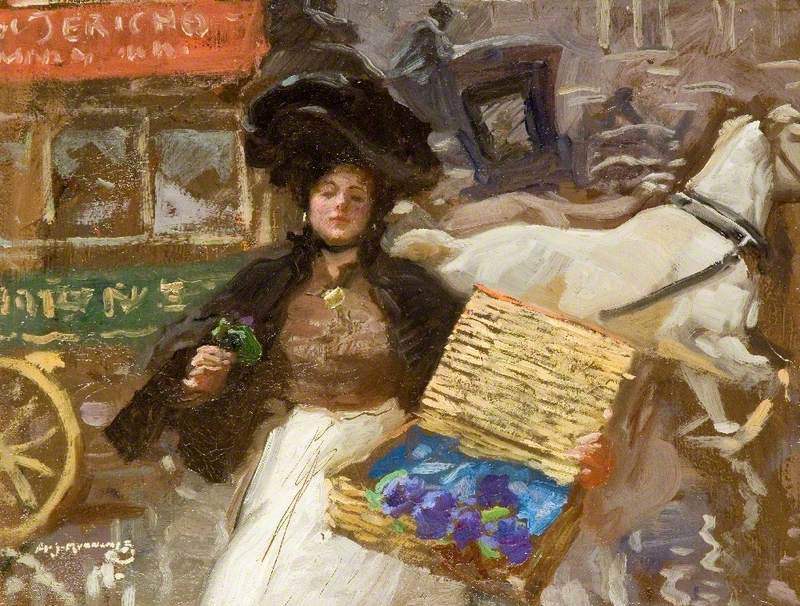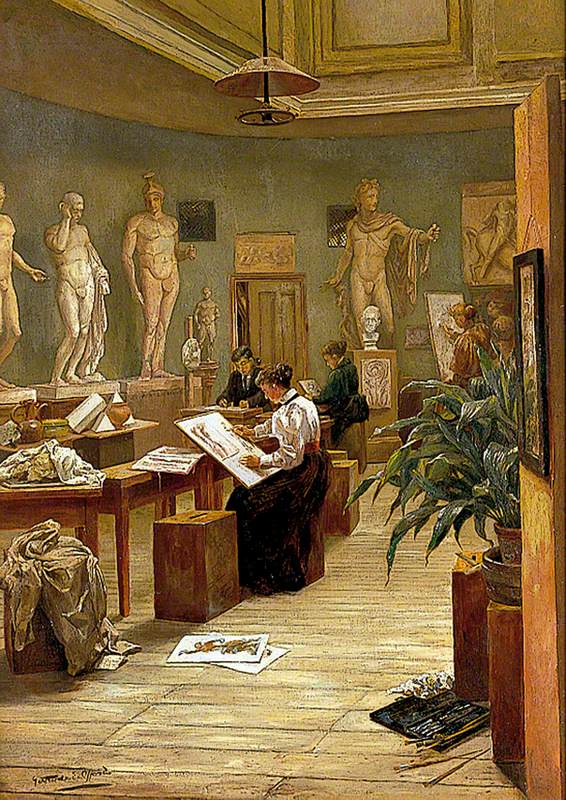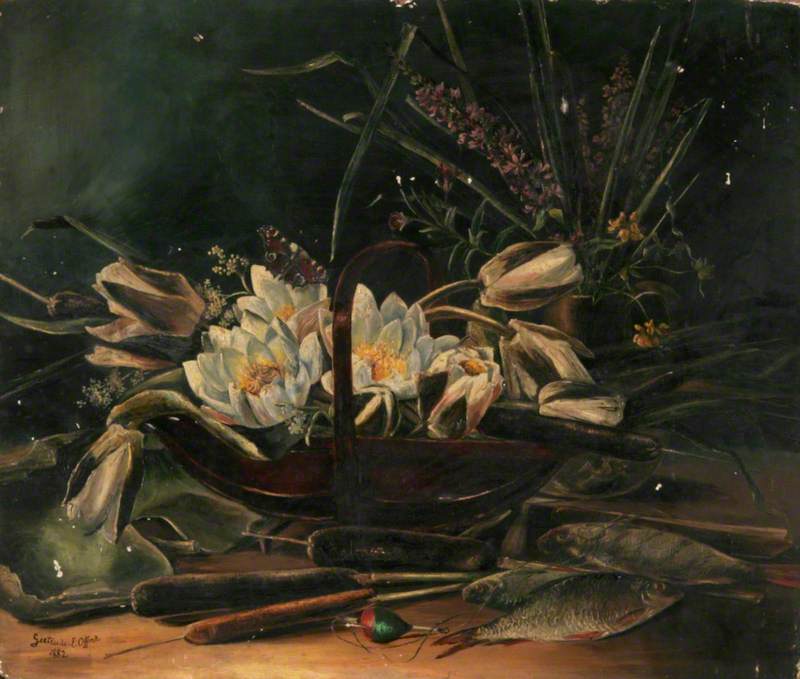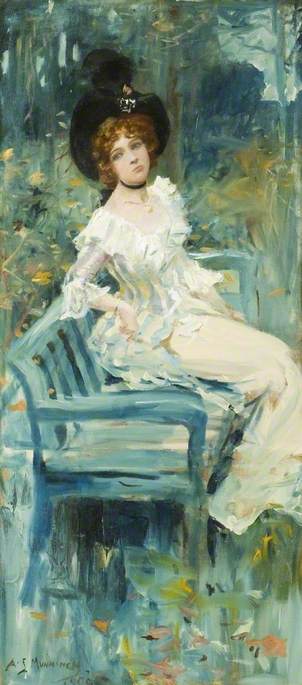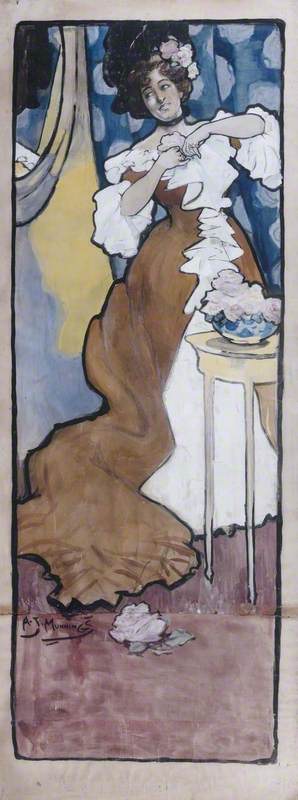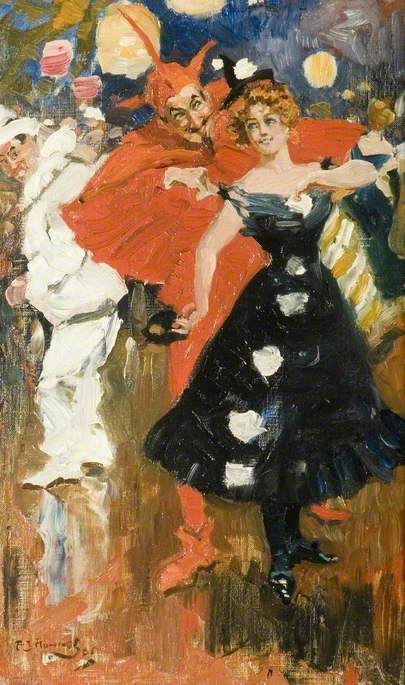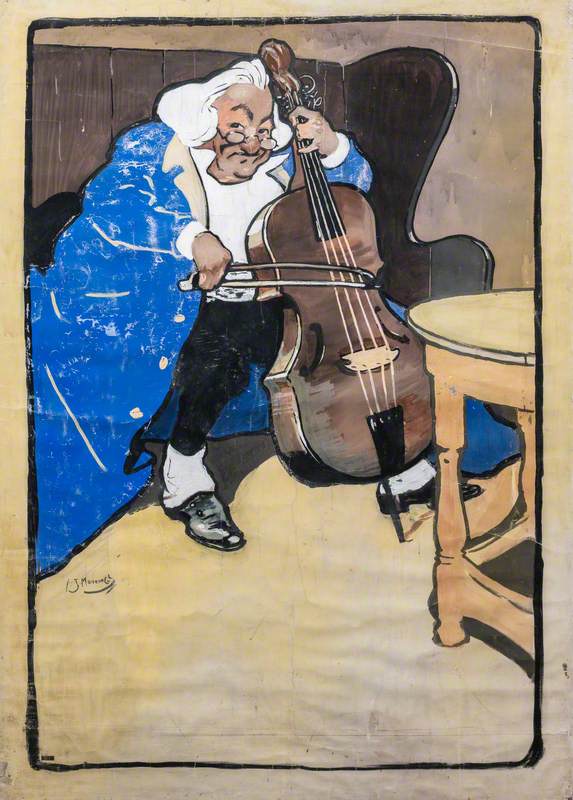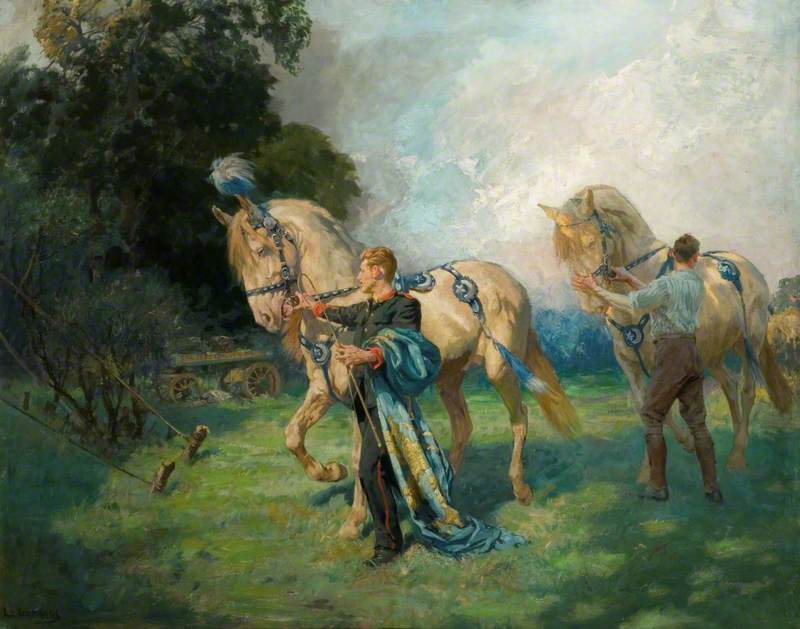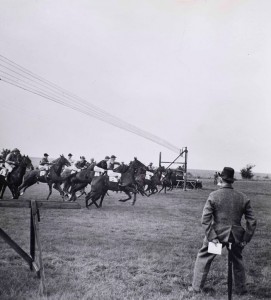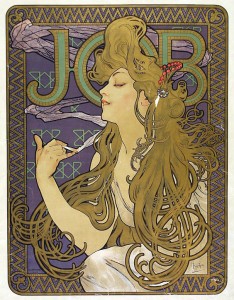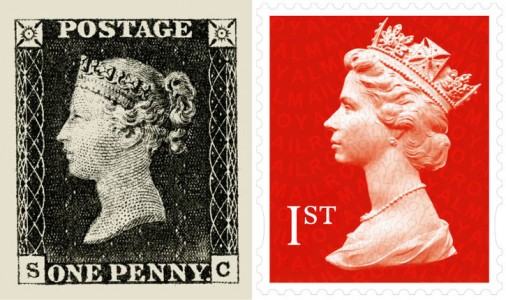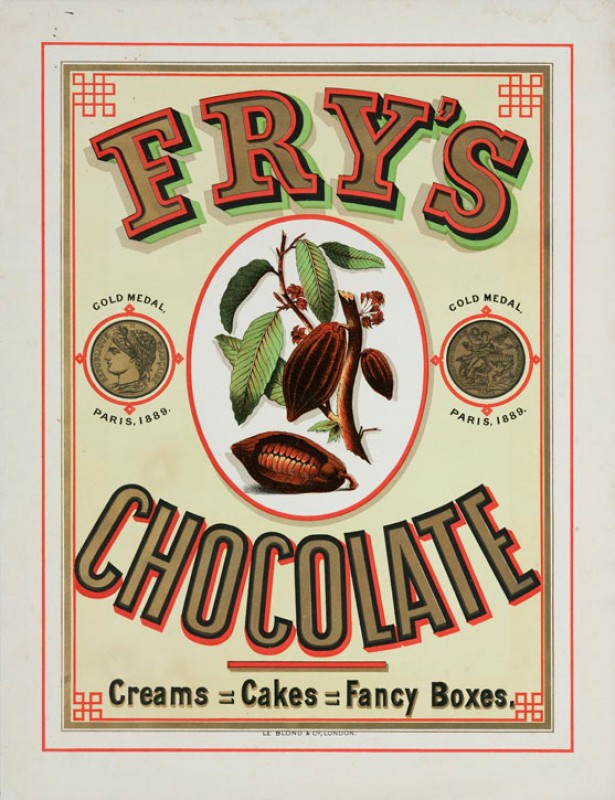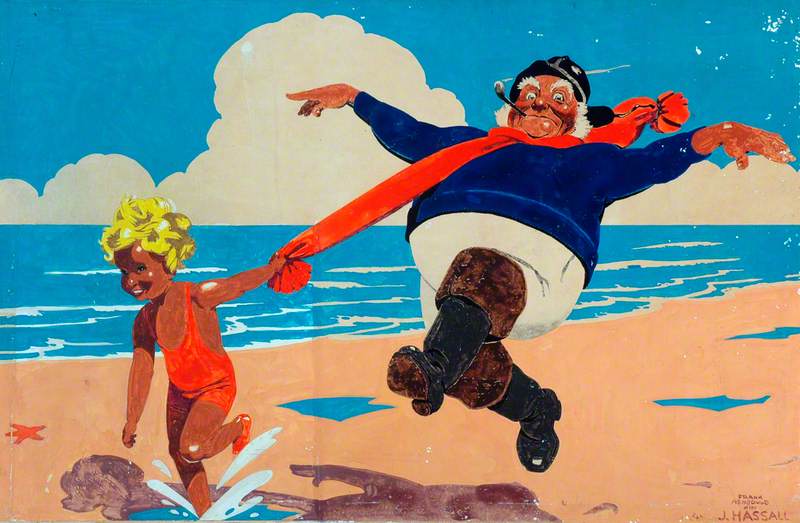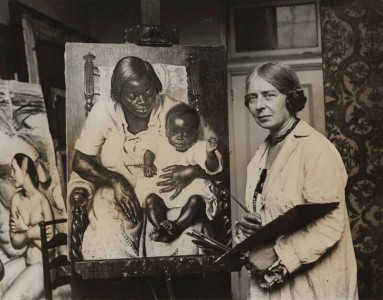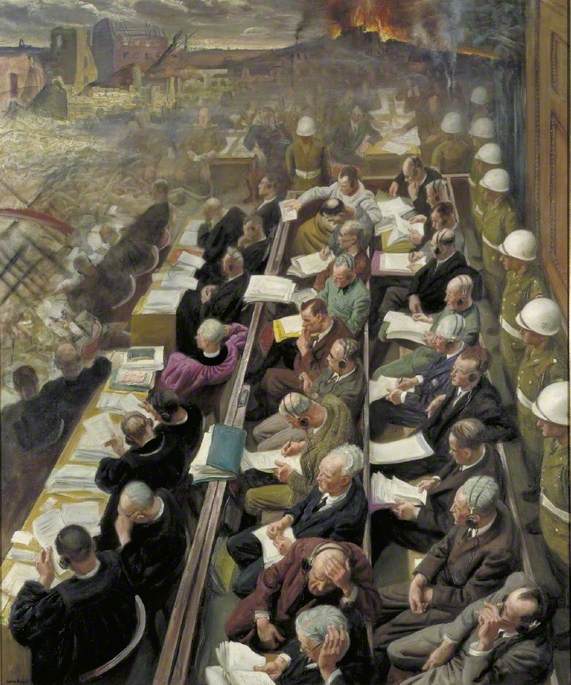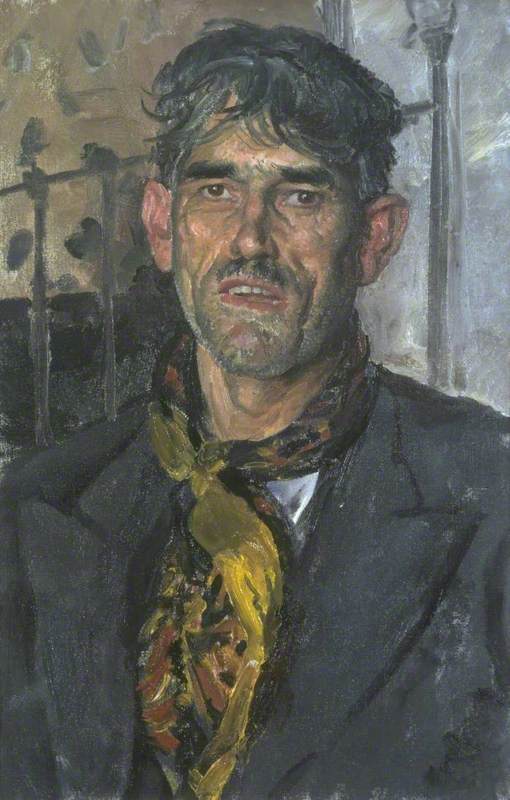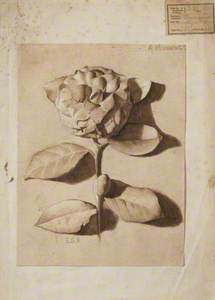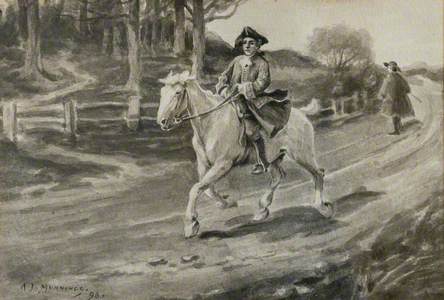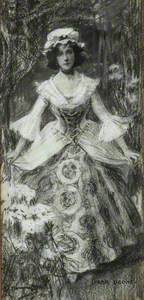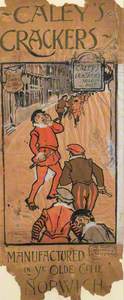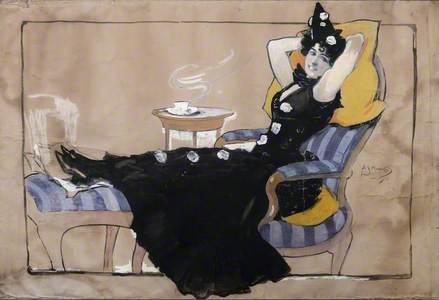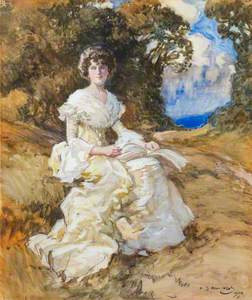The name Alfred Munnings is synonymous with paintings of horses and English country life. However, the latest exhibition at The Munnings Art Museum reveals another side to one of Britain's finest equestrian painters.
'Alfred Munnings The Art of the Poster' consists of over 100 paintings, drawings and designs exploring Munnings' early career as a commercial artist in the 1890s, during La Belle Epoque. Works from the museum's significant collection are combined with a number of rarely seen pictures on loan from private collections to create a vibrant and engaging display.
Design for a Poster, 'Caley's Art Crackers'
c.1898
Alfred James Munnings (1878–1959) 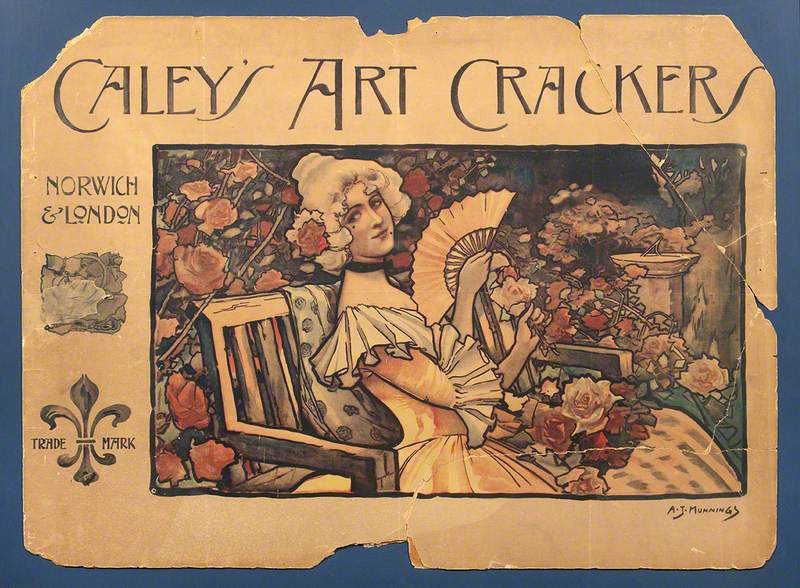
A move to the city
Munnings began drawing and painting from an early age and showed clear natural talent. In 1892, aged 14, Munnings moved from his home village of Mendham to the city of Norwich. He was apprenticed for six years to the lithographic printers Page Bros. & Co., Ltd. Here he learned to design advertisements and posters. He undertook work for large local companies such as Colman's Mustard and Caley's Crackers.
Munnings was immersed in a new city environment, inspired by trips to the theatre and the new people that he met. These influences can be seen in both his commercial and personal work.
In this work from c.1904, Munnings places the female figure in the foreground while the busy Norwich street life whirls around behind her. The people of Norwich also inspired Munnings' poster work, such as an 1890s design for Colman's Mustard which was never used.
Design for an Advert, 'Colman's Mustard'
1890s
Alfred James Munnings (1878–1959) 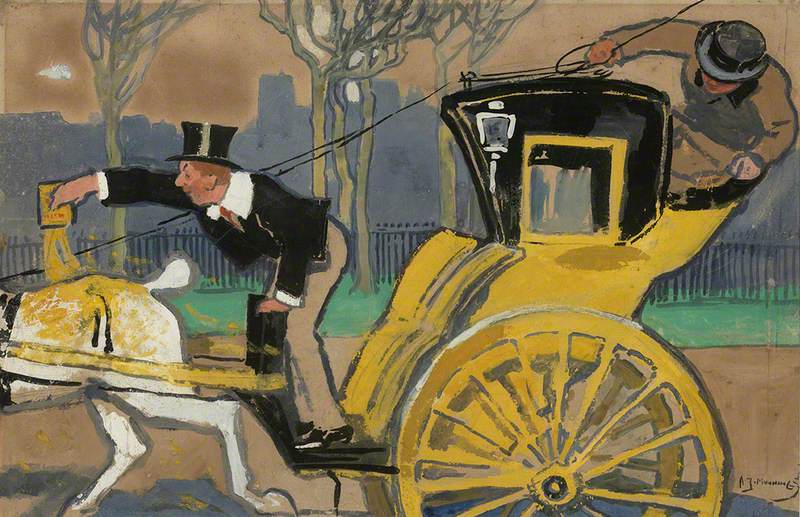
The Norwich School of Art
Whilst living in Norwich, Munnings attended evening classes at the Norwich school of art. He was taught watercolour painting by Gertrude Offord.
She was a prize-winning artist, known for her flower paintings, who often exhibited at the Royal Academy during the 1880s and 1890s. (Her two works shown here, The Art Class and Still Life with Water Lilies, are not included in the exhibition.)
Munnings clearly admired his tutor and writes in his autobiography: 'For the greater part of six years I worked under her... What lessons she gave in water-colour painting! Her enthusiasm was as great as her skill... what a lot I learned from Miss Offord!'
This painting, of a plaster cast, shows the level of detail demanded by Gertrude Offord of her students at Norwich School of Art. It was Munnings' examination piece.
The Norwich Art Circle exhibitions
Whilst still living in Norwich, Munnings joined the Norwich Art Circle. It is likely that he was introduced to the Circle in 1897 by Gertrude Offord. He worked hard to create paintings worthy of submission to their twice-yearly exhibitions.
'...all my efforts were made with the hope that I might shine there and perhaps sell my work.'
Joe Willet Goes to London on the Grey Mare
1898
Alfred James Munnings (1878–1959) 
Each May, the Norwich Art Circle held a unique exhibition of black and white pictures. Munnings was an avid reader; he was very familiar with the classic Victorian novelists and poets. Often his submissions to these black and white exhibitions were imagined scenes depicting heroes and heroines of literature.
Munnings was introduced to R. D. Blackmore's novel Lorna Doone by an influential work colleague: 'He told me of Lorna Doone, what a book for a youth! He was my literary advisor, and soon I was full of Tennyson, Scott, Dumas, Thackeray.'
The Norwich Art Circle – now Norfolk and Norwich Art Circle – is still active today and holds exhibitions annually.
The age of advertising
Munnings learnt to design posters and advertising during the 1890s. At this time, the poster craze was in full bloom. Henri de Toulouse-Lautrec's 1891 poster for the Moulin Rouge elevated the status of the poster to fine art. Then, in 1894, Alphonse Mucha created the first masterpiece of Art Nouveau poster design.
This week we celebrate the exquisite creativity enabled by Mucha’s relationship with Sarah Bernhardt (1844-1923). The Parisian actress was the most influential figure in Mucha’s life as an artist. We begin with his breakthrough poster for her, Gismonda, 1894.#mucha #artnouveau pic.twitter.com/M8My6oh6RT
— Mucha Foundation (@AlphonseMucha) March 22, 2022
Facilitated by lithography's ability to mass produce designs, the streets of Paris, Milan and Berlin were turned into public art galleries, ushering in the modern age of advertising.
'Now and then I made a hit'.
This original design by Munnings was for a large poster used by the Norwich-based company Caley's, who made pulling crackers and chocolates.
Design for a Poster, 'Caley's Crackers'
1890s
Alfred James Munnings (1878–1959) 
The poster appeared on hoardings all over London around 1918. It shows three Elizabethan apprentice boys running up the street.
Caley's crackers were packaged in boxes with attractive designs on the lid. Crackers were produced for every occasion with many different names.
'But what names the crackers were given! Caley's Primrose Crackers... Double Violet... Long and Short... Classic... Seashore... Deep Sea. They were endless: all the better for trade.'
The engaging array of designs that Munnings produced for cracker box tops was inspired by popular trends and pastimes of the decade. The 1890s saw a large growth in the popularity of cycling among Europe's middle classes. Bicycles became safer, faster and more comfortable.
Design for a Box Top, 'Caley's Cycling Crackers'
c.1898
Alfred James Munnings (1878–1959) 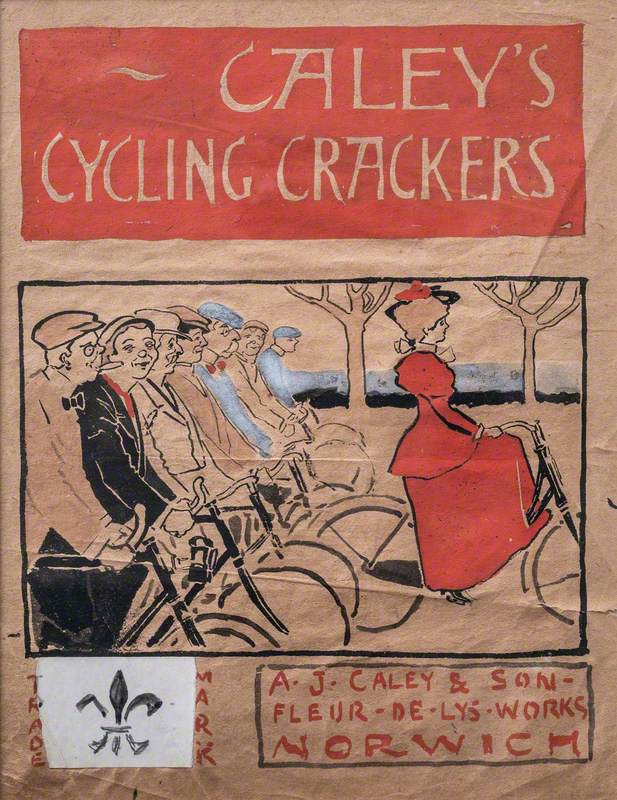
The first bicycle for women provided newfound independence. It was a competitive time for bicycle manufacturers and their poster designs and branding were all the more crucial for sales.
Models in charming dresses
Munnings natural inclination to paint literary heroines from his imagination is obvious in this painting of Cassie Jeweller. 'I had painted a most beautiful Oliver Goldsmith girl in a large hat and striped gown'.
In reality, the models he used for both his paintings and his poster designs were the women in his life. Munnings writes in his autobiography of one such model, his cousin, May. May worked for Caley's, and Munnings painted her repeatedly:
'Starting again on large poster designs of lovely girls in large hats for Caley's chocolates. My models were a dark-eyed attractive cousin and a friend, who came to stay. The cousin had beautiful arms and black hair, and was a flirt, and her name was May.'
The women are depicted in contemporary clothes with charming dresses, hats and attractive accessories. This poster shows a fashionable figure dressed in frilly sleeves, a feathered hat and a choker necklace.
Painted at Mendham, this original poster design was entered into the Poster Academy at Crystal Palace where it won the silver medal in 1899.
Characters in historical costume
Munnings' use of historical costume is key to the character creation in his poster designs. One of his most recognisable motifs is the Pierrot. During the 1880s and 1890s, the Pierrot figure became popular once again and could be found all across the visual arts.
Here we get a glimpse of Munnings' love of drama, costume and storytelling, as well as the strong influence of his adverting designs. It is also an example of Munnings' exuberant use of colour and uninhibited, impressionistic brushwork that was a feature of his painting in the early years of the twentieth century.
The fashionable Pierrot figure is used for this Caley's cracker box top design. Munnings describes the appeal of his imagined, often costumed, caricatures to Caley's: 'I was doing work which they could not, bringing poster and figure design work to a firm that had never before done anything of the kind.'
Design for a Box Top, 'Caley's Domino Crackers'
1890s
Alfred James Munnings (1878–1959) 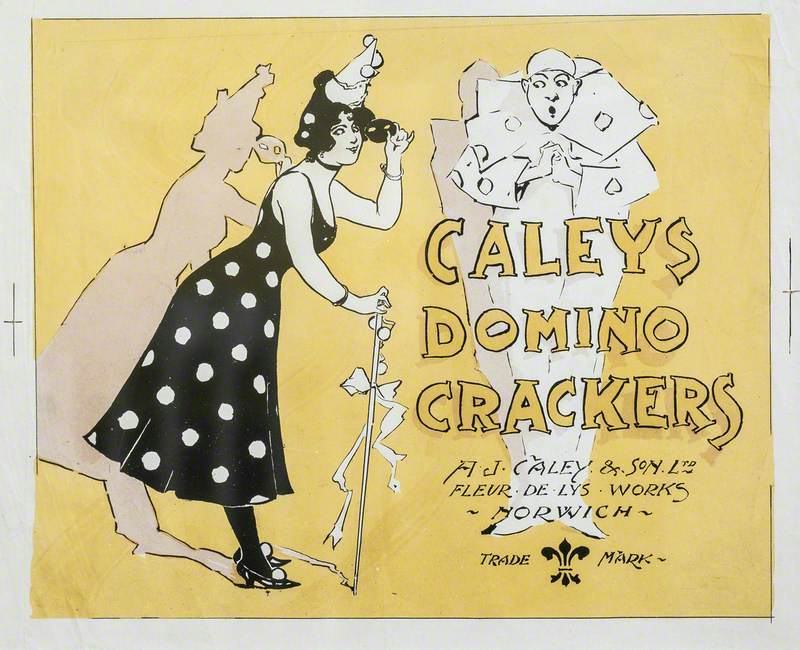
Many of Munnings' poster designs feature characters in Georgian costume. Munnings had a great fascination with the Georgian period. He refers to this in his autobiography: 'This was the period of costume that I liked best of all.'
Munnings' own clothes were inspired by the past. This was observed by his friend, the artist Dame Laura Knight: 'We went over to Norwich for the night and dined with [Munnings] at the Maid's Head Hotel. We sat in the bar/parlour afterwards sipping port at a shiny mahogany table. To look at AJ in those surroundings took you back 150 years; he fitted into the antiquity; even his clothes had a cut that belonged to the past.'
Old Gentleman in Period Costume with Walking Stick
Alfred James Munnings (1878–1959) 
As with the Pierrot in The Fancy Dress Ball, this figure, initially painted in oils, transforms into a thickly outlined character for a poster.
Chosen from amongst 240 entries at the Poster Academy at Crystal Palace in London this design, of a man in Georgian costume playing a cello, won the gold medal. Munnings received the news of his success whilst recovering from an accident in which he lost sight in his right eye.
He sold the medal for six gold sovereigns and spent the money on a celebratory dinner. He later regretted parting with the prize but was unable to retrieve it.
Design for an Advert or Box Top, 'Caley's Chocolate Easter Novelties'
1890s
Alfred James Munnings (1878–1959) 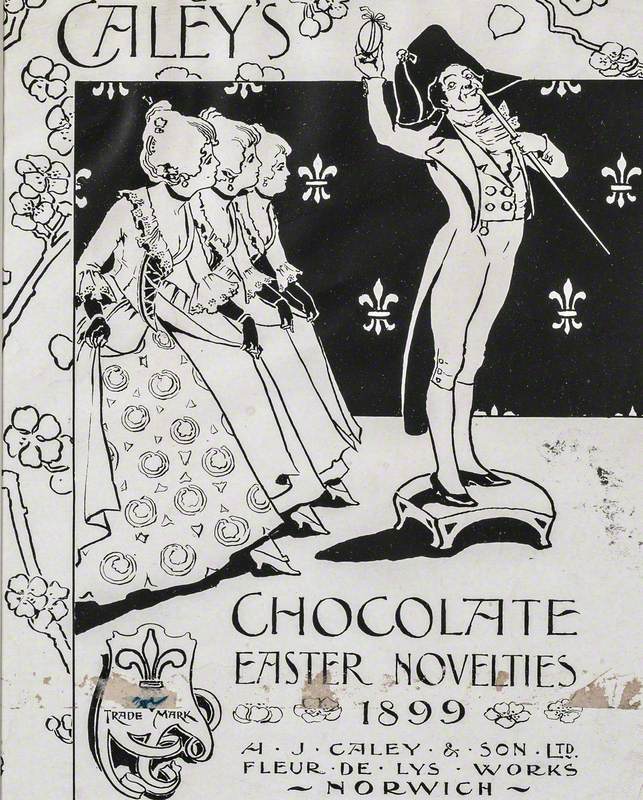
In addition to the posters, Georgian-costumed figures appear on the cracker box tops that Munnings designed.
Fairies and fantasy
The Victorian era witnessed the growing popularity and publication of fairy and fantastical tales. The fascination with the subject was instigated by the publication of Alice's Adventures in Wonderland by Lewis Carroll in 1865 and continued into the twentieth century.
In this Caley's poster, Munnings has used much of the typical fairy imagery such as wings, pointed ears and toadstools.
Design for a Poster, 'Caley's Crackers'
1890s
Alfred James Munnings (1878–1959) 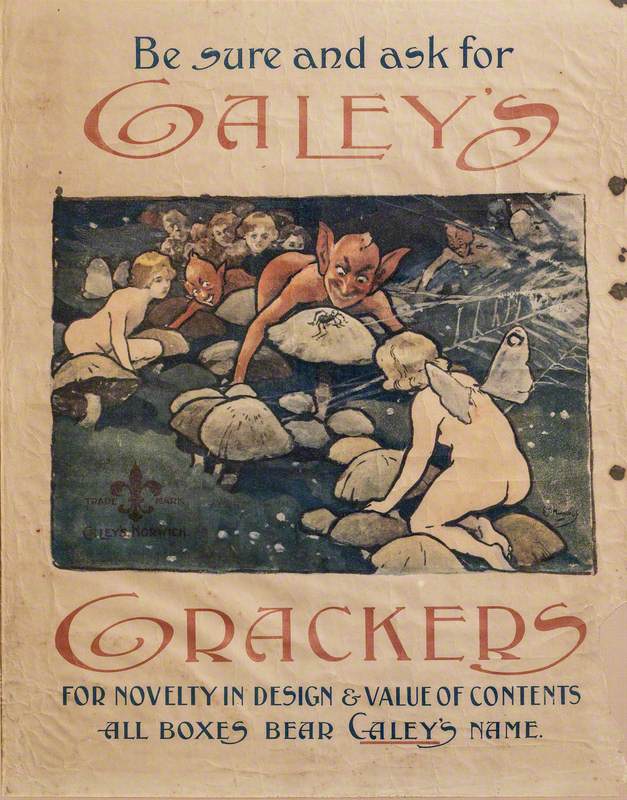
This cracker box top design uses the fantastical character of the mermaid.
Design for a Box Top, 'Caley's Deep Sea Crackers'
1890s
Alfred James Munnings (1878–1959) 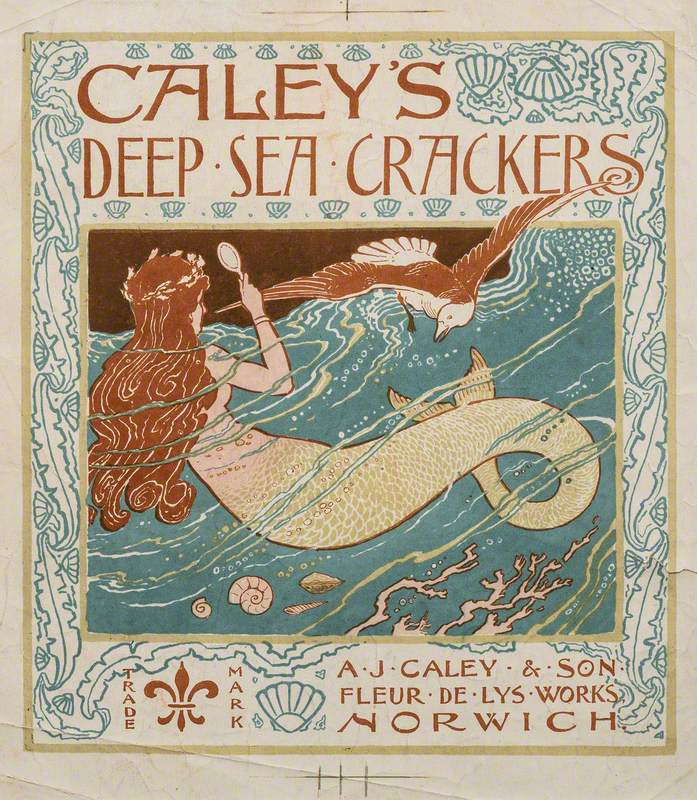
In 1898, at the end of his lithographic apprenticeship, Page Bros offered Munnings a job. Despite this opportunity, Munnings' success in selling his pictures of country life, landscapes and horses through the Norwich Art Circle meant that he could decline the offer in order to pursue plein air painting.
At the height of Munnings' career during the 1920s and 1930s, his commercial mindset, likely developed during his apprenticeship, enabled him to paint on-demand appealing and sellable equestrian portraits which brought him wealth and fame.
Victoria Harris, Museum Officer
